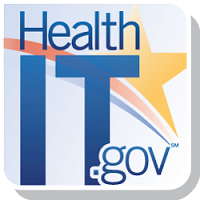 By Seth Pazinski/ Director, Office of Planning, Evaluation, and Analysis , and
By Seth Pazinski/ Director, Office of Planning, Evaluation, and Analysis , and
Talisha Searcy/ Director of Research and Evaluation, Office of Planning, Evaluation and Analysis, ONC
Twitter: @ONC_HealthIT
In April we asked for your input and comments on ways for us to measure how well our nation’s health care system is doing in achieving “widespread interoperability,” as required by the Medicare Access and CHIP Reauthorization Act of 2015 (MACRA). Separate from the provisions that the Department of Health and Human Services (HHS) has proposed to implement through the Quality Payment Program for payment of office-based Medicare physicians, MACRA specifically calls on HHS to establish metrics for the exchange and use of clinical information to facilitate coordinated care and improve patient outcomes between participants in the Medicare and Medicaid Electronic Health Record (EHR) Incentive Programs and others nationwide.
We received nearly 100 comments from organizations and businesses all across the health and health information technology (health IT) landscape in response to our Request for Information and found that many of the comments related to four topics:
- Burden: Do not create significant additional reporting burdens for clinicians and other healthcare providers.
- Scope: Broaden the scope of measurement to include individuals and providers that are not eligible for the Medicare and Medicaid EHR Incentive Programs.
- Outcomes: Identify measures that go beyond exchange of health information. Although measuring the flow of information is important, it is also critical to examine the usage and usefulness of the information that is exchanged as well as the impact of exchange on health outcomes.
- Complexity: Recognize the complexity of measuring interoperability. Multiple data sources and more discussions are needed to measure interoperability fully.
Based on internal analysis, external feedback, and MACRA’s specific definitions of “widespread interoperability” and the relevant population to be measured, we have identified two measures in particular that satisfy both the feedback we received and MACRA’s specific parameters:
- Measure #1: Proportion of health care providers who are electronically engaging in the following core domains of interoperable exchange of health information: sending; receiving; finding (querying); and integrating information received from outside sources.
- Measure #2: Proportion of health care providers who report using the information they electronically receive from outside providers and sources for clinical decision-making.
Importantly, these measures do not add to providers’ reporting burden as part of their participation in federal health care programs like Medicare or Medicaid, but rather come from existing national surveys of hospitals and office-based physicians. These surveys are the American Hospital Association’s AHA Information Technology Supplement Survey and the Center for Disease Control and Prevention’s (CDC) National Center for Health Statistics’ annual National Electronic Health Record Survey of office-based physicians. Both surveys have relatively high response rates and convey health care providers’ perspectives on exchange and interoperability. As these surveys touch providers across the country in a variety of practices, they are not limited to the Medicare and Medicaid EHR Incentive Programs.
Although the MACRA requirement for measuring interoperability largely focuses on “meaningful users,” we are committed to advancing interoperability of health information more broadly. We will be expanding our measurement efforts to include populations across the care continuum in the near-term, as well as an increased focus on outcomes in the longer-term. This measurement strategy is described in the Shared Nationwide Interoperability Roadmap – a collaboration with the private sector, states, and federal partners to identify near-term actions to advance an interoperable health system – and the Federal Health IT Strategic Plan – a joint effort by more than 35 federal offices and agencies that use or influence the use of health information technology on person-centered care, advancement of science and overall health. We look forward to engaging with stakeholders from across the health IT landscape in further depth on these efforts to provide insight into the nation’s progress in ensuring that health data will flow seamlessly and securely where and when it is needed.
Ultimately, these metrics will help inform the wide range of efforts underway to achieve a learning health system where information flows seamlessly and securely, including:
- The pledges made earlier this year by many private sector market leaders to make electronic health information flow better by not blocking data, implementing and using federally recognized standards, and helping consumers easily and securely access, use and share their electronic health information;
- Updated information from health IT developers about potential costs and implementation issues that is posted online for providers to use when purchasing health IT, and
- Recent challenges we have issued to spur innovation of market-ready, user-friendly apps for consumers and providers and to make it easier for individuals to send their data where they wish.
Fulfilling Section 106(b)(1)(C) of the Medicare Access and CHIP Reauthorization Act of 2015
This post was originally published on the Health IT Buzz and is syndicated here with permission.
